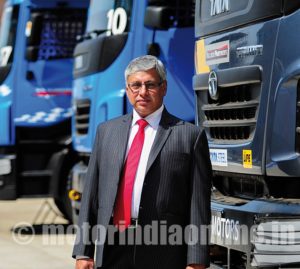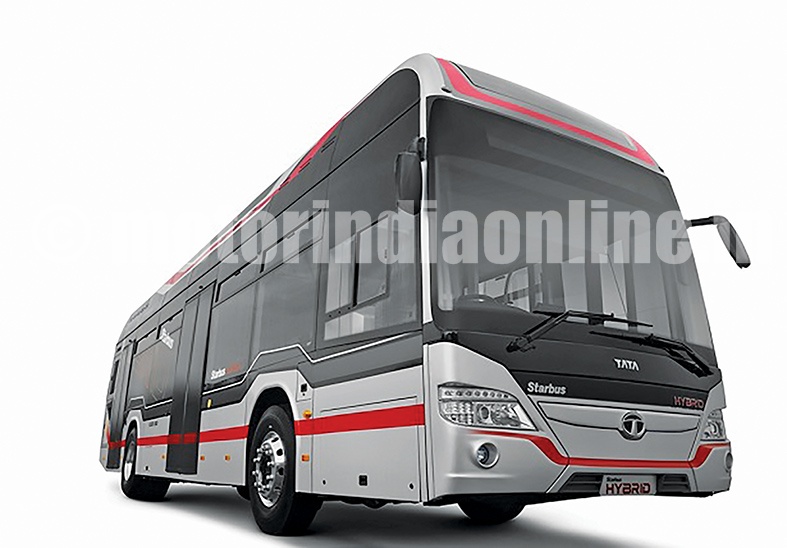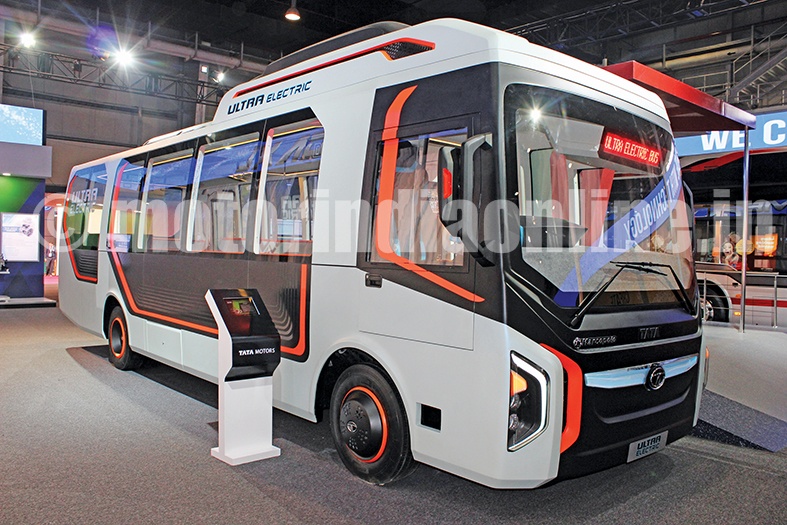Reiterating its commitment towards reducing carbon emissions, Tata Motors is upbeat about its radical new transport options – the Starbus Hybrid and the Ultra Electric bus that were showcased at the Auto Expo earlier this year. The Starbus hybrid offers substantial improvement in fuel economy and emits lower emissions as compared to conventional buses. The vehicle produces zero emissions when it works on electric mode, while the CNG mode is BS-4 compliant. It also uses new-generation lithium ion phosphate batteries (prismatic cell).
Tata Motors vision and belief in Starbus Hybrid, the world’s first commercially-produced CNG hybrid bus, was cemented when it recently bagged the single largest order awarded for hybrid electric vehicles. Mumbai Metropolitan Region Development Authority signed a contract with Tata Motors to supply 25 Starbus diesel Series hybrid electric buses. These buses will be used to connect Bandra Kurla Complex to Sion, Bandra and Kurla railway stations over the next year, improving feeder services to Mumbai’s fastest-growing business hub.
The Ultra Electric Bus, the first fully electric bus from Tata Motors, is also a step forward for electric buses. Built on the popular Tata Motors Ultra platform, the electric bus is meant for the urban commute. With complete electric drive train and zero emissions, the Ultra Electric Bus ensures low noise and vibration for a comfortable ride. Other features include roomy interiors which can be customised, utility provisions like charging ports and Wi-fi hotspot for on-the-go connectivity, high levels of security with Intelligent Transport System and security cameras, and new-generation telematics for efficient and user-friendly vehicle maintenance and tracking.
Sustainable green technologies
The intensive work being done on alternative fuels by Tata Motors serves as the basis for sustainability and innovation programme. Tata Motors has developed hydrogen fuel cell technology that can power both passenger and commercial vehicles to reduce dependency on fossil fuels. This technology was developed with support from the Government of India’s Department of Scientific and Industrial Research.

The hydrogen fuel cell technology works by combining compressed hydrogen with oxygen to generate electricity in the fuel cell. This charges a battery that powers the motor, with water vapour being the only emission. This futuristic technology turned heads when it was showcased at the Auto Expo 2016 on the Magic Iris Ziva, its popular last mile passenger transport vehicle. Tata Motors has already developed next-gen clean, green fuel based commercial vehicles, such as the Magic Iris Electric, a zero emission commercial passenger vehicle which uses solar energy for supplementary charging, and the hybrid Starbus, a clean fuel solution for public transport. The Ultra Electric bus is also a step forward towards sustainable green technologies.

